Text





http://gridcrosser.blogspot.com/2017/02/worn-identities.html
2 notes
·
View notes
Link
good article about the different styles of textiles across Philippines
0 notes
Text
T’nalak
https://www.thetextileatlas.com/craft-stories/tnalak-weaving-philippines
- Traditionally made by women of royal blood, thousands of patterns that reference folklore and stories are known to the T’boli women by memory.
- T’nalak has a distinctive tri-colour scheme: White for the pattern, red for relief elements and black (or deep brown) for the background.
- preparing weaving fibers from the abaca tree is called kedungon
- Two metal blades are used to quickly remove the pulp and reveal the filaments, which are worked by hand into fine threads
- During tembong, an artisan will connect individual threads end to end. Temogo, or dyeing, is done in the ikat-style, using beeswax and natural pigments. Fibres are first boiled in a black dye for several weeks. Weaving (mewel) is done on a backstrap loom (legogong) and weaving one piece of cloth can take up to a month of uninterrupted work. The final stage in the process, semaki, involves burnishing the fabric with a cowrie shell that is heated by friction. Nut oil is used to condition the fabric and add sheen.
-T’nalak is used for ritual purposes, as an offering to the spirits and during festival celebrations. It is also exchanged between families for food and supplies in the T'bolis’ barter economy, which endures to this day.
https://steemit.com/cultureandheritage/@diosarich/the-t-nalak-a-showcase-of-colorful-traditional-clothing-of-t-boli-tribe-in-southern-mindanao-fashionable-designers-creation
- T’Boli weavers are called dream weavers
- T'nalak is handwoven made of alpaca fibers which traditionally has three primary colors, red, black and the original color of the alpaca leaves. The colorant of the materials is natural dyed boiled in with bark, roots and leaves of plants. It is a heritage and believed that the intricate and creative patterns of the Tinalak were seen in their dreams and made it on to work.
- It (t’nalak) is ever present in significant turning points in a Tboli's life, such as birth, marriage, and death. It is the medium which sanctifies these rites, enveloping them in the length of its fabric like a benediction. In a culture which didn’t have a form of writing, the T’nalak served as both Literature and Art. The T’boli's expressed everything they are in the T’nalak: their dreams, beliefs, myths and even their religion.
- T'nalak are also their prized possession at marriage, even the covering for childbirth for ensuring safe delivery and for trading. Whenever they sell their work, they put a brass ring around it as for the spirits to allow them or to please. They're not even allowed to cut the T'nalak because of what they believe it would deliver them sickness.
http://beta.entrepreneurship.org.ph/2019/05/16/tnalak-cultural-and-entrepreneurial-manifestations-of-the-ip/
- A weaver should be working with full concentration, with complete rest prior to working—even abstaining from human pleasures–to avoid damage to intricate t’nalak designs. Spiritual beliefs also manifest in the making of t’nalak where its culture is also ingrained on the fabric. Therefore, cutting of the fabric is a no-no and using t’nalak as doormat is deemed sacrilegious.
Other sources
https://www.clothroads.com/woven-dreams-tnalak-ikat/
http://www.tboli.globalmatters.com/
https://www.erincanoy.com/project/one-weave-one-dream/
https://issuu.com/ekcanoy/docs/one_weave-mfa_thesis
- digital book that u can flip through
1 note
·
View note
Text
Dagmay
https://www.unesco-ichcap.org/the-dreaming-culture-of-the-mandaya/
- involves a mud-dyeing technique wherein practitioners submerge their tannin-dyed yarns into iron-rich mud for several days. First, they pound the bark of a tree and boil it with the abaca yarn. They then add the mud with a bluish color and let the yarn boil until their desired tone is achieved.
- The motifs of traditional Mandaya design include curvilinear, diamond, cross, trellis, and crocodile patterns.
- “Mandaya” comes from the word man, meaning “firs,” and daya, meaning “upstream.” In combination, Mandaya means “the first upstream people.” Mandayan culture is heavily based off of dreaming
- dagmay is considered as sacred; cutting them will destroy the essence and sacredness of the fabric.
- stories say that the dagmay was bestowedto the Mandaya through a dream by Tagamaling who taught her weaving techniques to create dagmay. From then on, it was sacred. Mandaya weavers have to say a prayer before starting her weave. The Mandaya weavers only weave in tranquil areas in their houses
https://www.bulatlat.com/2009/01/24/dreaming-of-the-dagmay/
- explains the origins of the Dagmay ; there are two different versions
https://mindanaotimes.com.ph/2019/06/01/reviving-the-mandayas-dagmay/
- Making it involves a mud-dyeing technique wherein tribe members soak their tannin-dyed yarns into iron-rich mud for days.
- weave the fiber into intricate figures and patterns depicting their folklores and beliefs
-More often, “dagmay” carries the human and crocodile motifs to their highest expression. The reptile is revered as shown by the regularity which it appears in their design. This skill and art is handed down from one generation to the next
0 notes
Text
Some articles about Filipino Weaving
https://narrastudio.com/blogs/journal/the-weaving-of-kalinga
- The design motifs and symbols are inspired from elements in the environment, such as birds and other animals, mountains, and stars.
- Red, for instance, symbolizes bravery while black represents the earth or the ground. Mountain symbols are embroidered in yellow, a color that also symbolizes wealth and fertility.
https://ph.asiatatler.com/life/the-untold-sacred-weaving-of-ifugaos
- Ifugaos and Kalingan people consider weaving sacred
- designs are based off of nature
- appearance of chicken bile or pig butchering by mumbaki helps determine the success of the weaving activity. Performing ritual blesses the cotton and physical condition of the weaver
- weaving is forbidden when a relative dies, unlucky
- bayawak pattern and phyton borders
- star symbol represents abundance and fertility
https://www.slideshare.net/elmerllames/weaving-cordillera-and-region-1-24044317
- ikat style: diamond shapes with red and white stripes. Dyeing process is similar to tye dye where the warp and weft are dyed before being weaved together, resulting in a blurred motif due to the bleeding of the dyes on the resist areas.
- warp ikat vs. weft ikat (more blurred and handmade appearance) vs. double ikat (most precise)
- inabel style: textile made of cotton and other natural fibers that are woven together in pedal frame looms. Abel is the process while Inabel is the outcome.
- Abel is really labor intensive and weavers have to master hand and feet coordination to properly use wooden handloom.
- Inabel patterns are inspired by nature
- Kalinga: dominant red stripes and motifs of geometric patterns as well as nature symbols interlaced with white yellow and black fibers
- Gilamat Ka-in is a wrap skirt that was traditionally woven in Lubuagan but is widely worn all over Kalinga
- Indigo and red symbolise the sky and ground which are the national colors of the Kalinga, with a coin attached as a pendant
- Yellow portions are embroidered and depicts mountains. It also symbolizes wealth. Embroidered plant patterns refer to growth and fertility
- Colorful beads or “bongol” is a part of the native costume, usually worn during fiestas, weddings, and important occassions.
- Ginamat (Kalinga cosatume), Bahag (or G-String og Kalinga)
- Bontoc Style: motifs are geometric shapes of things in environment like men, lizards, mountains, rains, and flowers
- Siniwsiwan: clothing and blankets. Often used for Bahag amongst men and Tapis amongst women
- married women wear ginaspala wanes (belts) with inawin patterns (continuous zig zag patterns)
https://digitalcommons.unl.edu/cgi/viewcontent.cgi?article=1577&context=tsaconf
https://thehinabiproject.org/styled/#:~:text=Textiles%20in%20Mindanao%20are%20predominantly,is%20native%20to%20the%20Philippines.&text=Among%20the%20Moslems%20of%20Mindanao,weavers%20do%20not%20weave%20abaca.
- Textiles in Mindanao are predominantly handwoven from abaca (musa textilis). A member of the banana plant family, it grows naturally and is native to the Philippines
- weaving is done with back strapped looms
- Manuvu: Mandaya, Bagobo, Blaan, Higoanonm and T’Boli weave with Abaca
- Moslems in Mindanao (Magindanaon, Maranaw, and Yakan) continue the tradition of cotton and silk weaving. Muslim weavers do not weave abaca
https://cnnphilippines.com/life/culture/2017/06/27/mindanao-weaves.html
- The woven textiles express both the agricultural roots of each community, as well as a strong non-Christian belief system animated by ancestral and natural spirits
- Kusikus : Wind God motif, thought to shield from furious winds
- Sarimanok: a mythical bird of good fortune (in maranao textiles), the crocodile/lizard is revered for the symmetrical design patterns in its skin, and the Fak is a representation of a frog for its role in agriculture (found in T’Boli T’nalak cloth)
- community’s agricultural roots is also evident in the textiles through patterns depicting tiny diamonds (representing rice grains) and Xs (representing rice mortars)
- Mandaya people’s most popular textiles is called dagmay, which is a handwoven cloth designed with patterns of man and crocodile, for which the mandaya weavers are known for. Geometric and curvilinear forms in yellow, blue, and white yarns, as well as hooks crosses and diamond shapes are the favorite embellishments in the Mandaya’s woven fabrics
- more distinguished women wore red cotton blouses with black sleeves while the common women wore brown and more common women wore brown and black abaca blouses.
- B’laan employ similar weaving styles as their neighbors the Bagobo and T’Boli, producing ikat textiles on abaca or handwoven cotton
- well known for their embroidery and decorative skills, using cross-stitches and outline-stitches to embroider stylized human figures, or when they stitch small disks of mother-of-pearl at regular intervals over the cloth
- Maranao and Maguindanao (people of the lake)
- produce malong which is worn by men and women for a number of purposes. Made by sewing two pieces of sarong cloth lengthwise along its edges to produce a square and can be woven from either cotton or silk. Landap has been noted to be probably the most distinctive malong, which comes on one solid color or two colors arranged in alternating bands.
- the maranaos weave into colorful bands called langkit, consisting of three to four colors with okir designs: scroll, leaf, or vine motifs in abstract forms.
- the sarimanok is a key figure in maranao art
-Yakan
- known for weaving brightly colored fabrics, producing a myriad of textiles with distinct, strongly geometric, repetitive patterns
- bunga sama (based on diamond), sinaluan (small bands of bisected and quartered lozenge shapes), and pussuk labbung (saw-tooth-pattern), and the kabban budi (triangular-rectangular designs)
-Bagobo
- weaving pattern tied to Magandi, a dominant warrior class, identified by the red color of their clothing
- ikat is a prominant fixture in their textiles, characterized with a rhomb design and curvilinear patterns. Their most recognizable motifs are inspired by the natural environment: lightnight, plants, stars, and human figures
- T’Boli
- well known for their t’nalak which is a distinctive abaca cloth that comes in three colors: reddish brown, black, and white. Black and brown colors come from naturally occuring dyes and white is the natural color of abaca.
- well known t’nalak patterns include: bangala (man in house), Klung (shield), sawo (python), nipa g’mayaw (mythical bird), and the tofi (frog); all based in sigul, a zigzag arrangement of triangles or rhombs
- designs for the t’nalak are borne from the weaver’s dreams, and the spirit of Fu Dalo (guardian of t’nalak designs) begins to reside in the cloth at the start of its production, thus warranting extreme care to prevent breakage ofthe yarns while weaving
Tausug
- used to weave cotton and silk textiles from imported yarns.
- habul tiyahian (or labur tiyahiran) is a traditional textile, an embroidered sarong
- well known tapestry weave techniques found in pis (head cloths), tadjung (tubular skirts), and kandit (sashes)
- pis siyabit is characterized by diamond shapes, diagonal crosses, and zigzag motifs inside small squares and rectangles. Predominant colors are pink, orange, and maroon shades (sometimes with a bit of green)
https://artsandculture.google.com/exhibit/the-art-of-the-malong-ayala-museum/owKCDBBzFibtIg?hl=en
- malong used by maranao and maguindanao from mindanao
- can be worn by women as a dress and by men over trousers as a formal wear
- traditionally handwoven by women using a backstrap loom
- silk textiles into wedding saris arrived in Philippines and Indonesia from Gujarat, India. Also known as “patola,” these circular patterns from India were adopted by Maranao weavers
- can either be made of silk for ceremonial occasions or cotton
- grouped into two kinds: intricate design or simple hatching with two colors
- for everyday wear, the malong is. usually made of cotton with simple plaids and stripes
- more elaborate malong made of silk in colors red, purple, and yellow is worn for ceremonial occassions
- in the past, yellow was reserved for local royalty
- now men prefer malong with dark shades of red and magenta and women prefer yellow
- malong andon: considered the most expensive and rarest or the oldest type of the three types of malong. Andon refers to the Patola motif
- malong a landap: characterized by “langkit” or decorative strips of profuse geometric designs, hand-sewn on the malong. This is considered the most popular. Two narrow “langkit” are called “tobiran” while the wider band is called the “lakban”
- can include inscription in “kirim” which is the maranao language written with arabic script
-Malong a ampik: the third type of malong. characterized by a square pattern with lines and cross lines of contrasting primary colors along black and white geometrical shapes
- common motifs on malongs: “pako Rabong” and “matola” are the most common motifs.
- Pako rabong is a growing fern motif
- uses of a malong: used as a cape, cowl or raincoat, bag or sack, used as head gear, curtain
3 notes
·
View notes
Text
Maranao culture
- Weaving is a cultural tradition mostly practiced by women from generation to generation. At an early age, girls are trained by their mothers to learn the craft. When these young girls grow up and marry, they successively pass this skill to their daughters. Furthermore, Maranao women who have knowledge in weaving are revered in society.
- Maranao textiles are also famous for their ornate designs and colors. Their textile weaving involves traditional Southeast Asian backstrap loom weaving using native decorative ornamentation. A versatile garb called malong is a hand-woven fabric with beautifully patterned designs. It can be worn by all genders and classes, with dominant hues of gold and purple. Malong made of high-quality silk or cotton are intended for special occasions, and a yellow malong is considered to be royal or high class.
- The materials, designs, and colors of a malong usually determine the economic status of the wearer in the society. Landap, andon, and plaids are some of the different varieties of malong. The process of preparing and weaving the cloth is complicated, and special textiles such as silk, particularly those worn by the royals, are woven mostly by expert craftswomen. Back in the day, the social and economic significance of a Maranao can be measured by the number and classes of malong he or she owns.
-also they muslim lol










1 note
·
View note
Text
t’boli culture
-T'nalak are also their prized possession at marriage, even the covering for childbirth for ensuring safe delivery and for trading. Whenever they sell their work, they put a brass ring around it as for the spirits to allow them or to please. They're not even allowed to cut the T'nalak because of what they believe it would deliver them sickness.
- Making use of the various geometrical patterns and the trademark red, black and white colors, the T’bolis weave the natural and the supernatural in the abaca strands of the T’nalak. Furthermore, the weaving process integrates the personal, the social and the cultural.
- The T’nalak fabric holds a special and prominent place in T’boli's culture. It is ever present in significant turning points in a Tboli's life, such as birth, marriage, and death. It is the medium which sanctifies these rites, enveloping them in the length of its fabric like a benediction. In a culture which didn’t have a form of writing, the T’nalak served as both Literature and Art. The T’boli's expressed everything they are in the T’nalak: their dreams, beliefs, myths and even their religion.
- It is a heritage and believed that the intricate and creative patterns of the Tinalak were seen in their dreams and made it on to work. *
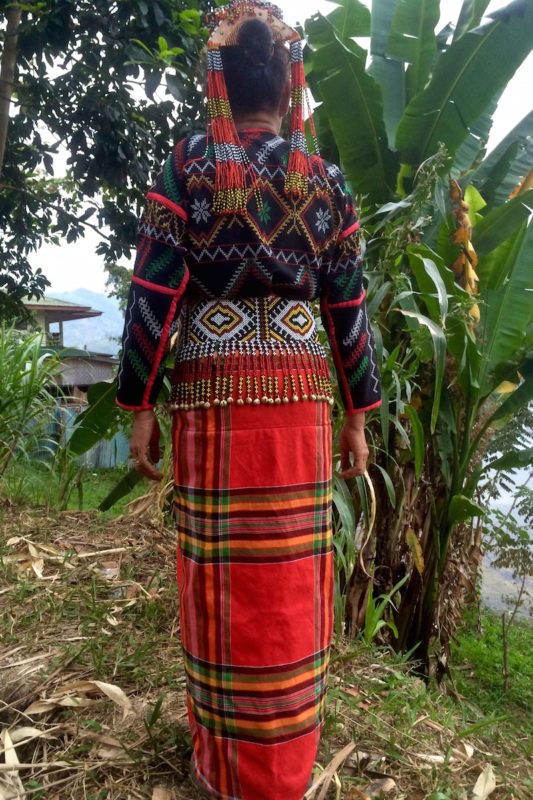
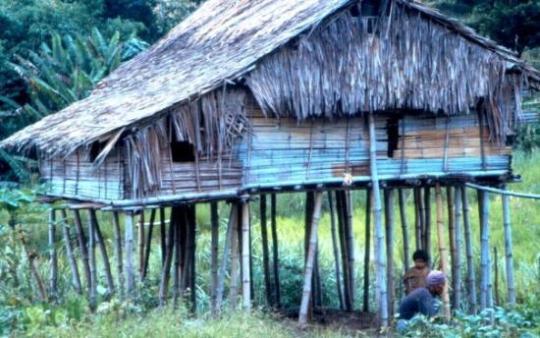
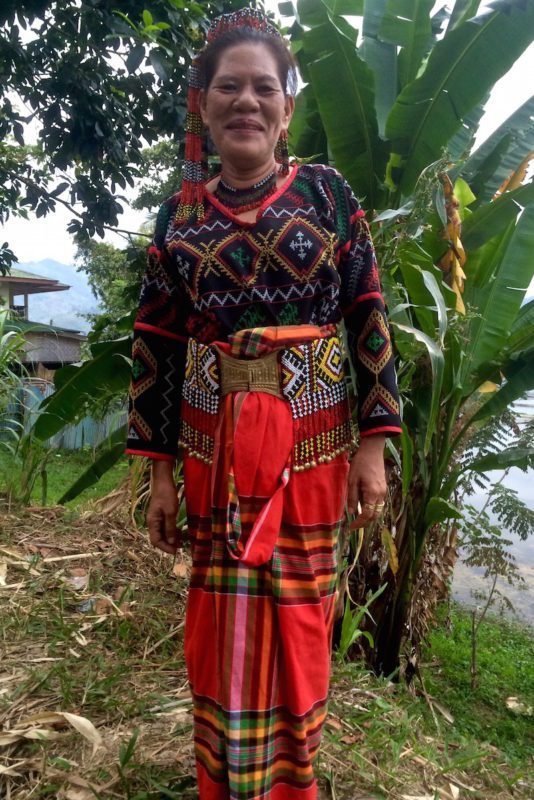

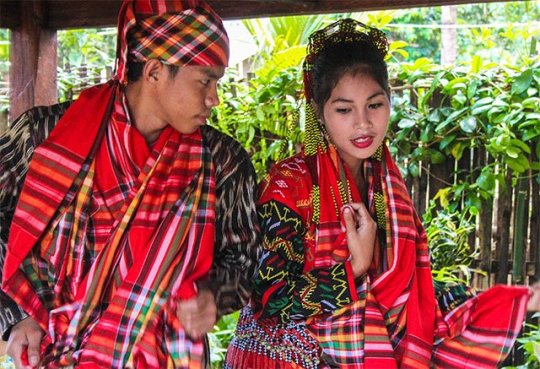
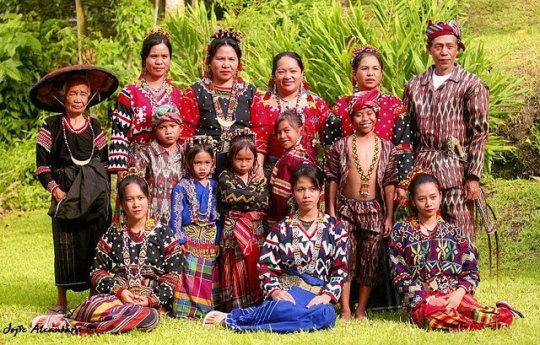
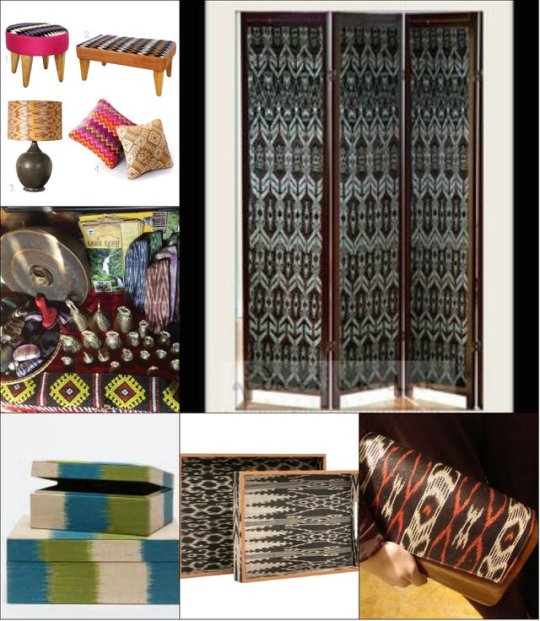
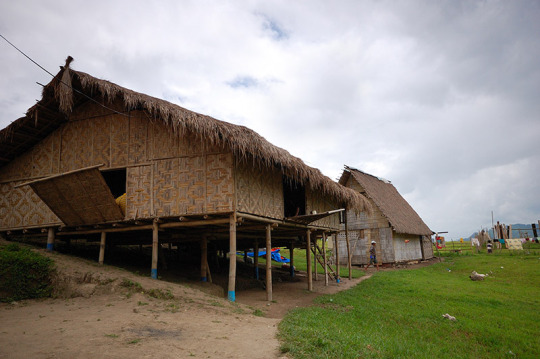
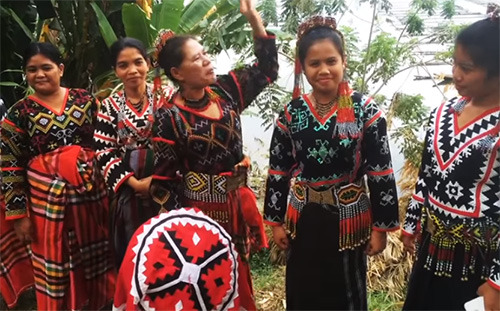

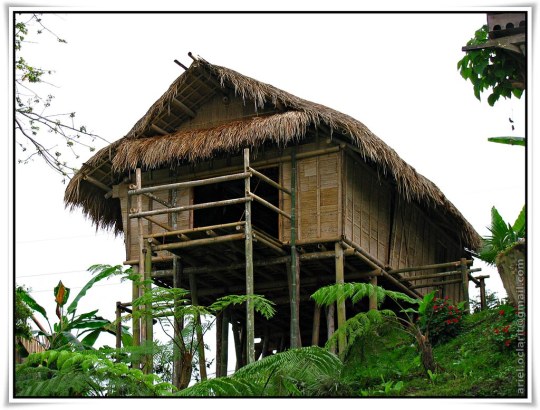
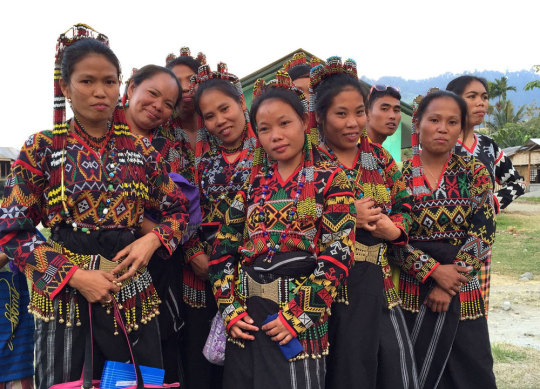

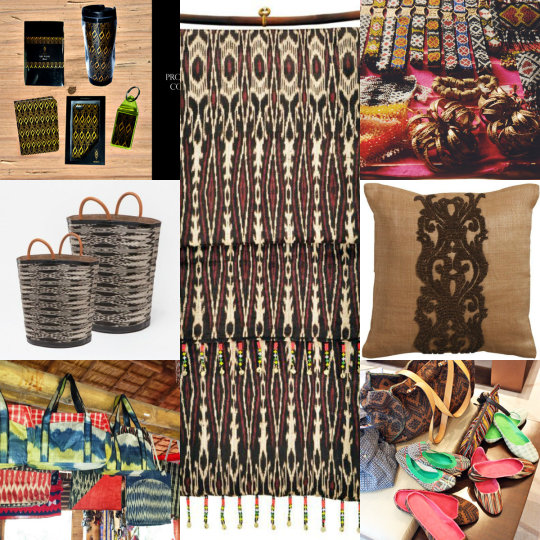
1 note
·
View note
Text
Matigsalug culture and clothing
- The Matigsalug men wear short tight-fitting tine pants that are of knee secret and are hem and turbans for the head decorated with beads and fringed with goat's/horse's hair.


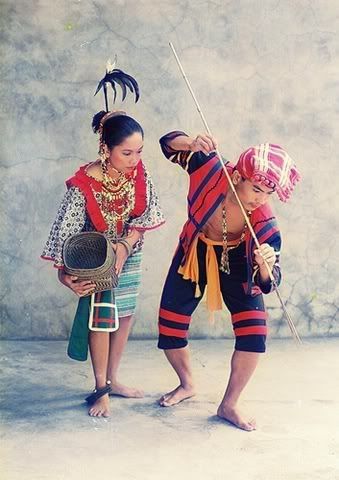

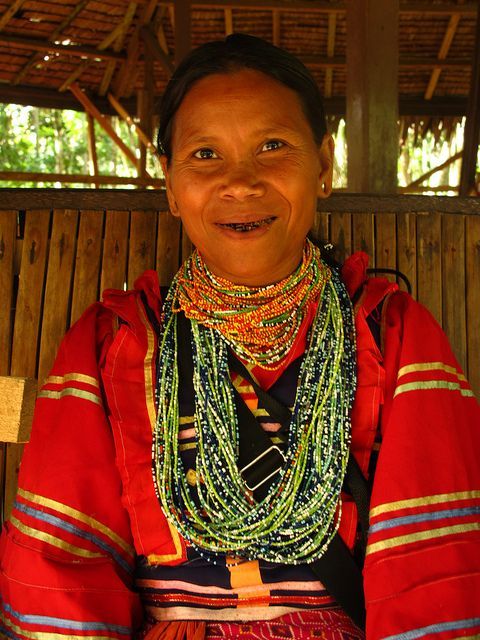



0 notes
Text
Mandaya culture
- Jewelry is used as a measure of one's socio-economic status among the Mandaya women; no young Mandaya woman, single or married ventures out without donning a piece of jewelry. Oft times, silver was used for fashioning jewelry; brass, in the form of brass casting, was copied from the Muslims.

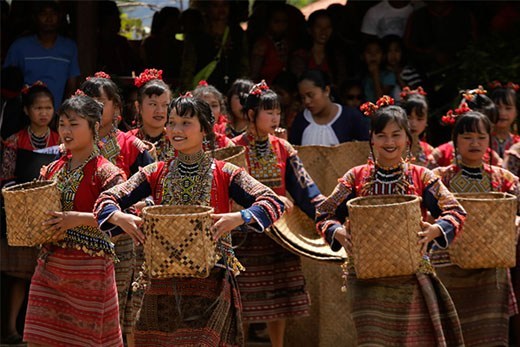



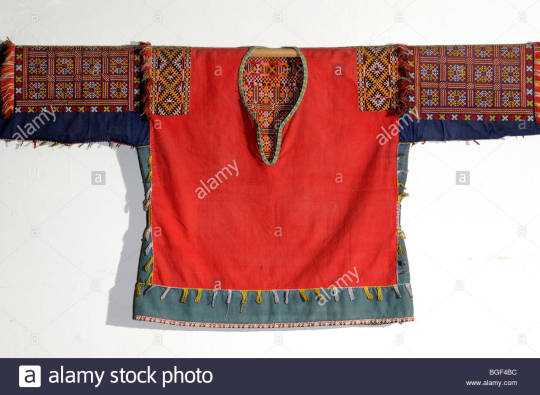
0 notes
Text
Bagobo culture notes
-When a woman wears red and yellow skirt means that her husband has killed a man before
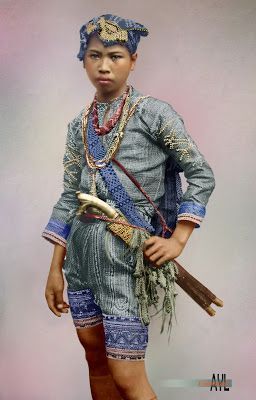


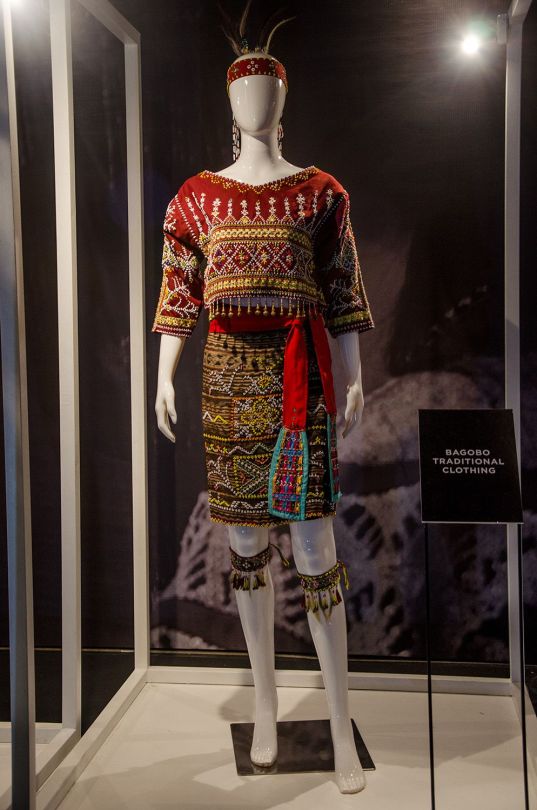
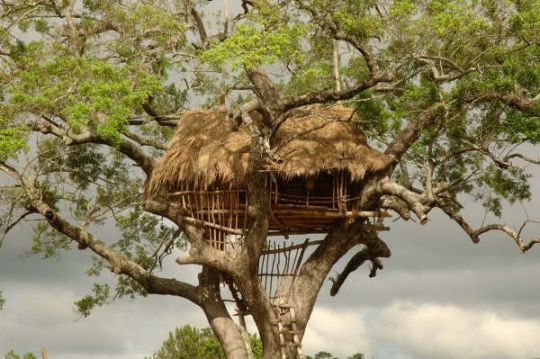
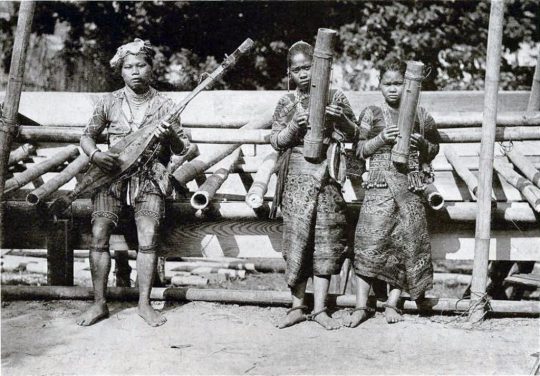
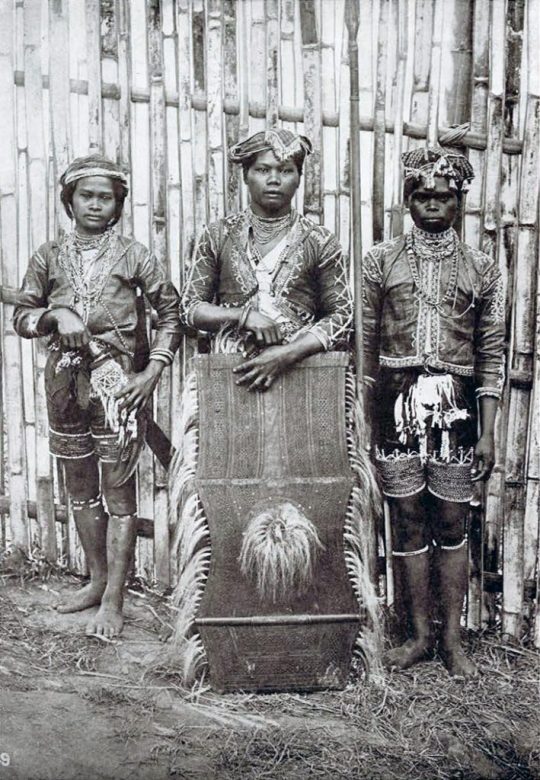
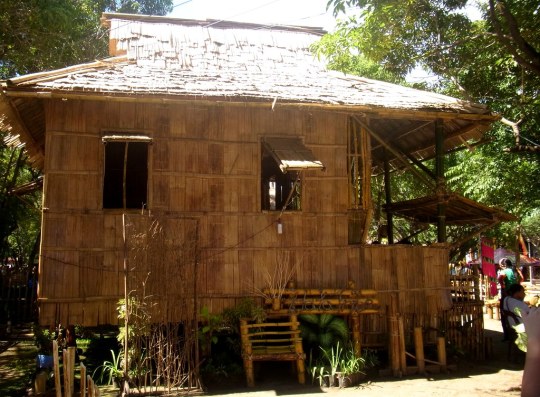



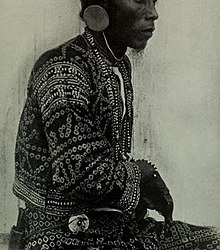
0 notes
Text
B’laan culture
- The Blaan have a tradition of creating art from brass and copper.


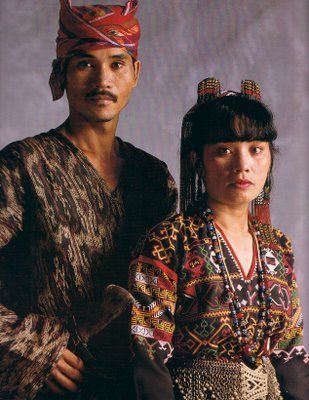

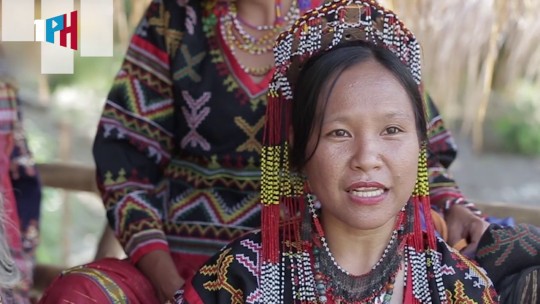
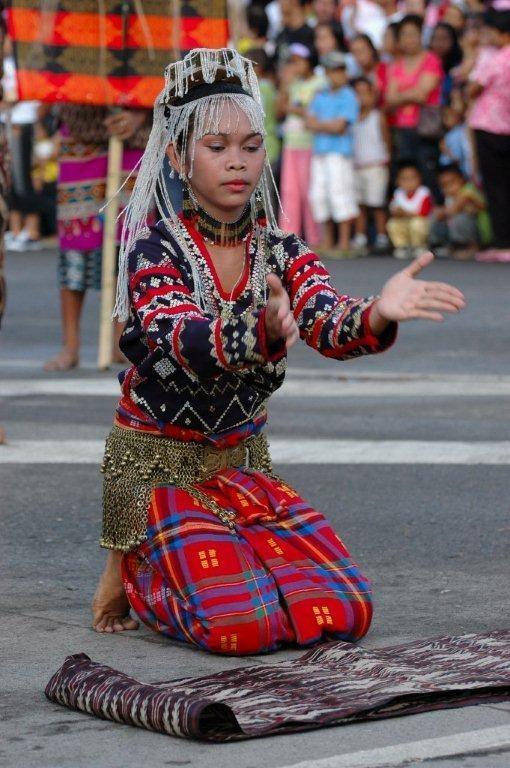
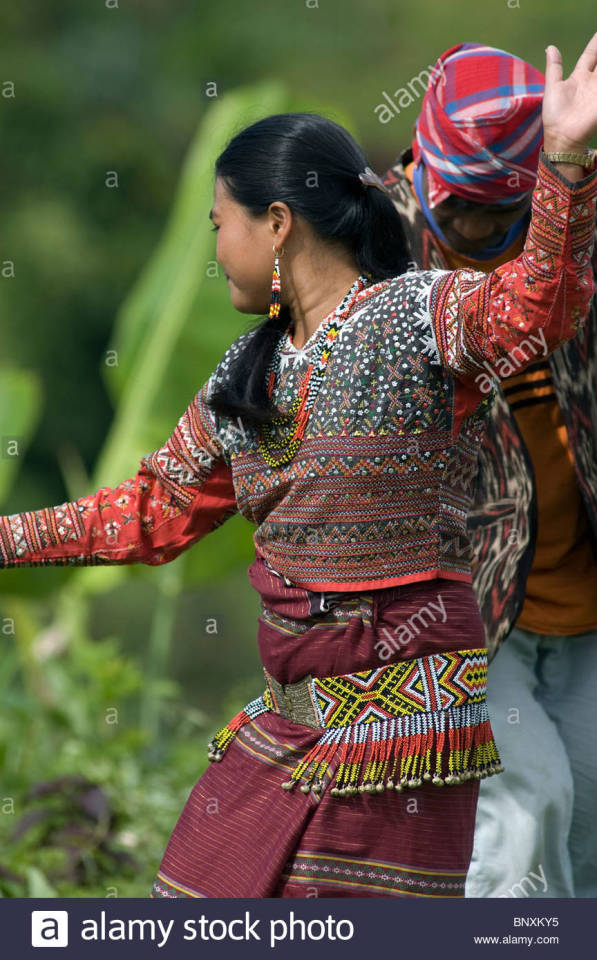
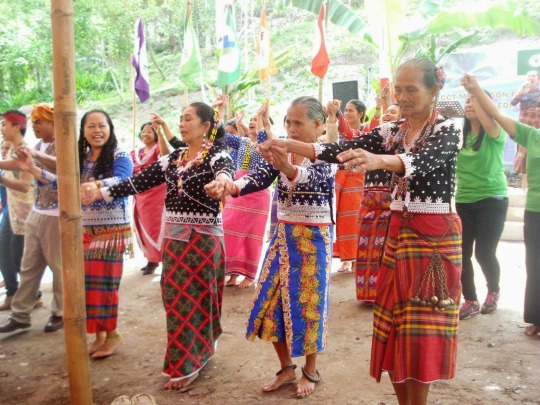
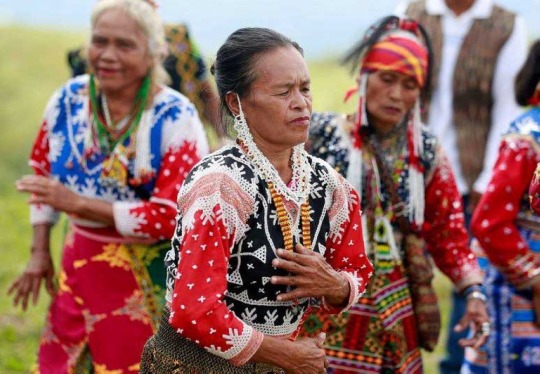
0 notes






























